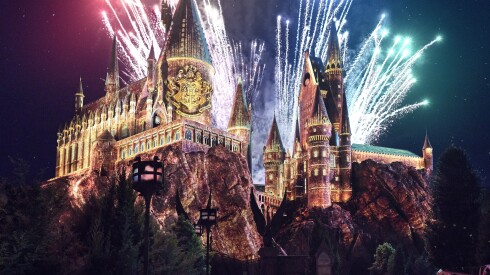In the wake of more than 20,000 earthquakes on Iceland’s Reykjanes Peninsula since late October, the famed geothermal spa Blue Lagoon has temporarily closed its doors until at least November 30.
“The chances of a volcanic eruption on the Reykjanes Peninsula have significantly increased, initiating the precautionary evacuation of the town Grindavík to ensure the safety of residents,” said a statement on the Blue Lagoon website. The popular spa first announced it would temporarily close on November 9 and initially said the closure would last until November 16.
Volcanic activity in Iceland started on October 24 with a “seismic swarm” of more than 4,000 earthquakes in the span of the first few days, according to the Icelandic Meteorological Office, the country’s national weather service. Centered around the town of Grindavík, just south of the Blue Lagoon and about 30 miles southwest of Reykjavík, the activity is due to an accumulation of magma several miles under the Earth’s crust.
In the weeks since the initial swarm, thousands of earthquakes have continued to jolt the area, “an example of this episodic seismic activity that can be expected while magma accumulation is in progress,” stated the Icelandic Meteorological Office.
In light of the increased risk of a volcanic eruption, the U.S. Embassy in Reykjavík has issued a volcano alert.
“The Icelandic Meteorological Office warned of the high probability of a volcanic eruption in the next few days in or near Grindavík, 26 miles due southwest of Reykjavík, on the Reykjanes Peninsula,” the embassy said in a statement issued on November 13.
The National Police Commissioner of Iceland on Monday raised the danger level from “alert” to “emergency,” the highest threat level, as a result of the seismic activity.
What a volcanic eruption in Iceland would mean for air travel
“There are no current impacts to flight operations at Keflavík Airport (KEF),” according to the November 13 statement issued by the U.S. Embassy in Reykjavík.
However, the Aviation Color Code in Iceland has been elevated to orange, which indicates a “heightened unrest with increased likelihood of eruption,” per the Icelandic Meteorological Office.
The 2010 Eyjafjallajökull volcano eruption in Iceland “caused travel chaos for weeks on end as the volcano produced a large plume of volcanic ash lofted high into the atmosphere,” Jonathan Porter, chief meteorologist for global weather center AccuWeather, said in a statement.
Thankfully, the potential broader impact to air travel this time around is not expected to be as severe, according to Porter.
But, cautioned Porter, “People who are traveling to and from Europe during the next few weeks, especially during the United States Thanksgiving holiday, should closely monitor developments in Iceland.”
He added, “Although it does not appear that this volcano will have as major an impact [on] air travel across Europe as we saw back in 2010, any volcanic ash sent into the atmosphere can result in portions of air space being closed . . . so travelers will need to watch out for a potential cascade of flight cancellations and delays.”
Blue Lagoon closure
The Blue Lagoon closure impacts the lagoon, as well as the company’s Retreat hotel and spa and Silica hotel on the same property, and two on-site restaurants, Moss and Lava. There’s no word on whether the closure could last longer, but the Blue Lagoon is continuing to assess the situation, according to the statement.
“At this moment it is not possible to determine when or where an eruption might occur,” the Blue Lagoon website stated. No additional sites in Iceland outside of the Reykjanes Peninsula are currently closed.
“Considering disruptions to our guests’ experience and the sustained pressure on our employees, these precautionary measures were taken to ensure safety and well-being for all,” the Blue Lagoon said in the statement.
Known as the land of fire and ice, the remote Nordic country is one of the most volcanically active areas on Earth thanks to its position atop the Mid-Atlantic Ridge, a roughly 25-mile ridge along the ocean floor separating the North American and Eurasian tectonic plates. Iceland is home to about 130 volcanoes; the most recent eruption occurred in July at the Fagradalsfjall volcano, located in the same region of the Reykjanes Peninsula, though in an uninhabited area. It was the third consecutive year the volcano was active—it was also active in August 2022 and in March through December in 2021.
Prior to the 2021 activity, the volcanic system hadn’t erupted since the 12th century. None of these eruptions impacted Keflavík, the country’s largest airport located about 15 miles from the Blue Lagoon, and about an hour’s drive from Reykjavík. (The last time the airport was temporarily shuttered because of volcanic activity was in 2011, when the Grimsvotn volcano erupted and spewed a plume of smoke and ash 12 miles into the air, impacting transatlantic flights and grounding planes in some European destinations, including Scotland and Germany.)
The Blue Lagoon is one of Iceland’s biggest tourist attractions, drawing hundreds of thousands of visitors each year to a country with a population that numbers below 400,000. The striking turquoise water is surrounded by black lava formations and is one of hundreds of geothermal pools and natural hot springs in a country where a year-round outdoor bathing culture is a hallmark.
This story was originally published on November 10, 2023, and was updated on November 14, 2023, to include current information.








